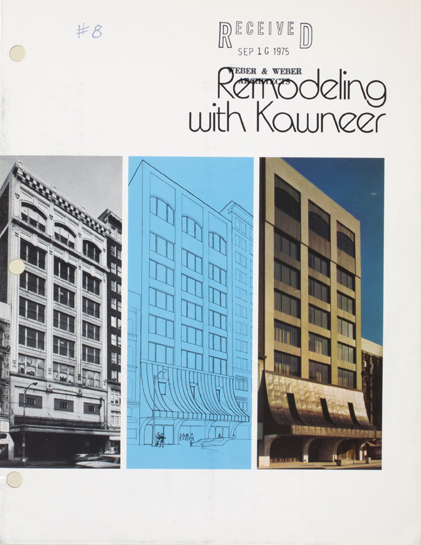03. "Remodeling with Kawneer." Kawneer Architectural Products; Niles, MI; 1975.
During the mid-1930s, the renovation of existing buildings, dubbed “modernization,” became an increasingly significant portion of construction activity within the U.S.42 Modernization—the term itself “implied notions of progress, optimism, and a deliberate embrace of modernity”43—was a lifeline to an industry devastated by the Great Depression and its aftermath. In fact, unemployment in the building trades during this period was higher than in any other American industry.44 Under the aegis of Title I of the 1934 National Housing Act the Federal Housing Administration launched the “Modernize Main Street” program. Rather than providing the loans themselves, the program, which was designed to encourage building and lending for commercial properties, instead protected lenders against losses on renovation loans by providing insurance though the Modernization Credit Plan.45 With the cost of materials and labor drastically increasing following World War II, so-called modernization continued into the 1980s, by which time the historic preservation movement had begun to mature and the value of historic structures had become more widely recognized.
42. Gabrielle Esperdy, “The Odd-Job Alleyway of Building: Modernization, Marketing, and Architectural Practice in the 1930s,” Journal of Architectural Education, 2005, 25. ↩
43. Ibid.↩
44. Ibid, 26.↩
45. Kristina Wilson, Review of “The Odd-Job Alleyway of Building: Modernization, Marketing, and Architectural Practice in the 1930s” by Gabrielle Esperdy. Journal of Interdisciplinary History, vol. 39, 617.↩
"Tools of the Trade: 19th- and 20th-Century Architectural Trade Catalogs," Case 7, Ryerson & Burnham Libraries, August 4, 2015-October 12, 2015.
Link to R&B Archives Digital Collections record

